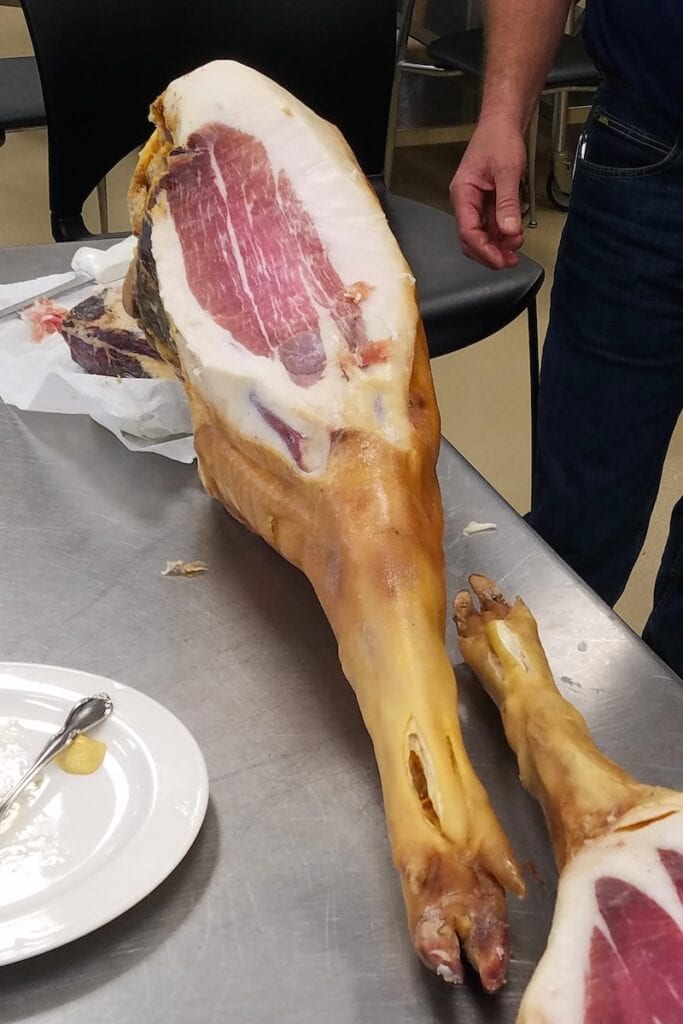The Lost Art of Butchering

In the early dawns of the 1920s, the boy sat watching attentively as his father skillfully butchered a whole beef. Year after year he handled the knife, running it smoothly between the muscles, along the bone, and through the sinew. It was an art, one that the boy, my grandfather, would later credit as his inspiration for becoming a surgeon. The role of town butcher was preserved for generations until the 1980’s, when Elliott’s Grocery and its butcher closed shop, succumbing to the industrialization of the American food system.
What happened to Elliott’s has been repeated time and again across the country. As a result, the true art of butchery is nearly extinct. Over the past half century, we have benefited from economies of scale and the rise of one stop shops, but in the process have lost a certain understanding of the origins of our food and how to prepare it. It is in the spirit of preserving and reviving this knowledge that two renowned butchers are touring the country for what has become known as “The Art of Butchering and Curing Event”.
Ask French Master Butcher Marc Pauvert or Chef Michael Sullivan who the better butcher is and each will point to the other. What is certain is that both preserve a wealth of knowledge as rare as gold.
Born in the 50’s, Marc is the product of a strict post-WWII French culinary environment when frugality and rigor were a way of life. Beginning his apprenticeship at 14 in the mountain village of Chamonix, life would later take him to Paris, Morocco, and Saudi Arabia, until one day, when hearing a friend singing the praises of Philadelphia, he set his sites on the New World. Upon his arrival in 1986, he was surprised to find that there were no butcher shops. After a series of successful ventures, including two butcher shops in Philly and collaborations with some of the world’s leading chefs, he currently resides in Baltimore as the Master Butcher at the Four Seasons restaurant, Wit & Wisdom.
Marc’s old world knowledge is perfectly complemented by Chef Michael Sullivan’s seemingly endless knowledge of the culinary arts, deep rooted love for charcuterie, and tremendous ability to teach. The son of a baker, Sullivan spent his early years as a Minister. This would later earn him the nickname “Reverend of Fat” and is reflected in the style with which he shares his knowledge and passion. After leaving the Ministry in his early thirties, he moved his family to New York, where he attended the Culinary Institute of America, while working in the city’s restaurants. Wanting to return to the south, Sullivan made his way to Tennessee in 2004, taking on the role of butcher at the resort property Blackberry Farm. In 2015 he embarked on a new venture with Creekstone Farms, traveling and spreading the gospel of Black Angus beef and pork.
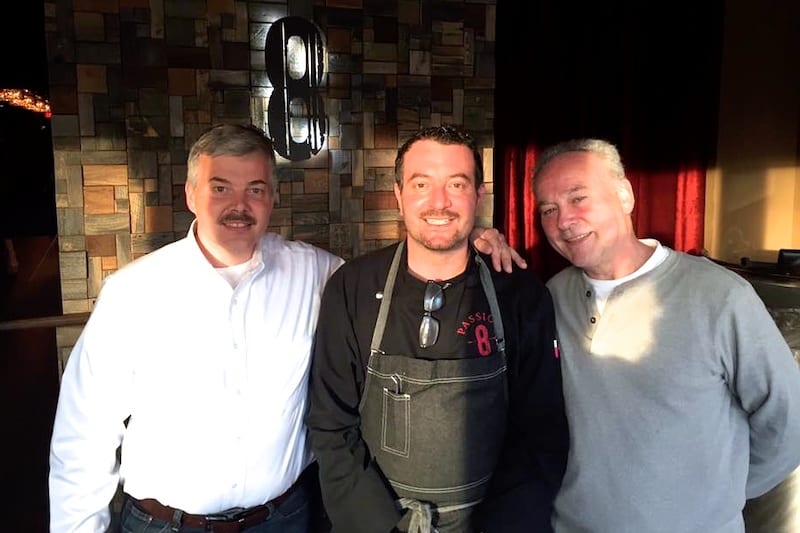
Armed with the best of old and new world knowledge, and a passion for teaching, both butchers created Cure Camp, a multi-day intensive course on the art of butchering. And intense it is! The breadth and depth that Pauvert and Sullivan cover is astounding. Pork, chicken, duck, beef, lamb, veal, pâté, and even blood sausage. It was after attending the Cure Camp in Birmingham, AL, that Charlotte Chef Luca Annunziata, a third generation butcher from Italy, felt compelled to bring the duo to the Queen City. For three days a group of chefs and butchers, coming from as far as Louisiana, gathered at the Central Piedmont Community College and Chef Luca’s restaurant, Passion8. Following is some of what they learned: Meat is Money
During the workshop, Pauvert and Sullivan butchered a beef, chicken, hog, duck, lamb, and veal. In addition to demonstrating the technique, they discussed how each part of the animal could be used in the kitchen. In the case of the hog, for example, 99% of the animal has some form of culinary application. What chefs quickly learned is that the economics of purchasing and using a whole animal as opposed to precut meats isn’t just a more sustainable approach, it also yields better profit margins, or as Pauvert would say, “It’s M-O-N-E-Y !”
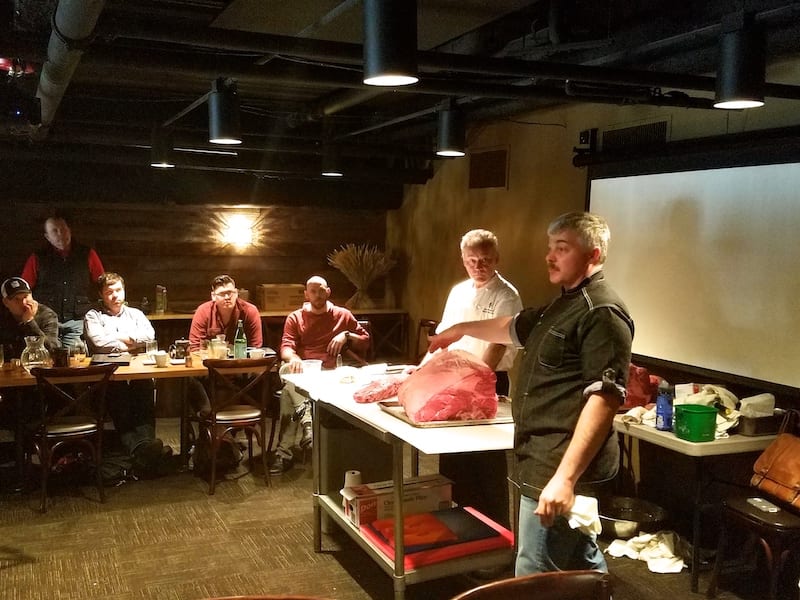
Know Your Animal
We always credit the cook for our delicious meal and often overlook an equally important component: the ingredient. As the chefs worked with each animal, the group discussed the impact of breed, feed, and lifestyle on flavor. Springer Mountain Farms chicken, Creekstone Farms Black Angus beef, Border Springs Farm lamb, Autumn Olive Farms pork. Each discussed ways that they are working to raise animals in an environment that maximizes health and well being, leading to better flavor.
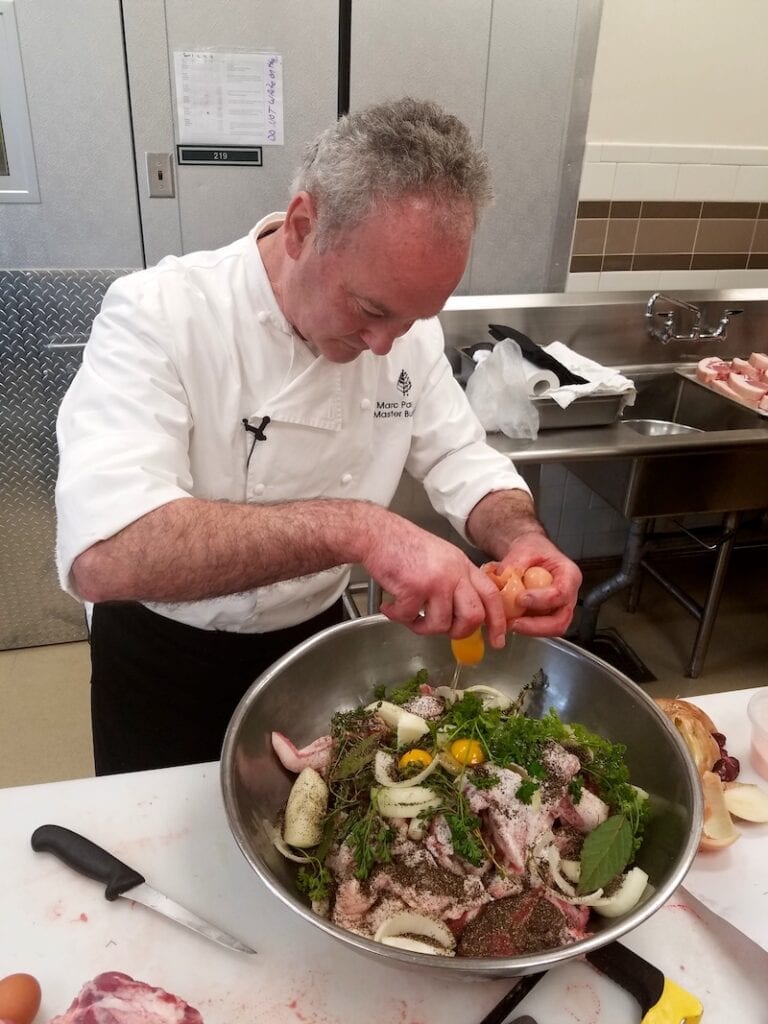
Beyond the Primal Cut
Part of the challenge with whole animal butchering is that chefs and consumers often lack the knowledge of the many delicious ways non-primal cuts can be prepared. This is in contrast to my experience growing up in Europe, where the local grocery store displayed cows tongue and pigs feet next to the cold cuts. By not using these parts, not only are we wasting food, we’re also missing out on some fantastic flavors. Organ meat makes for outstanding pâtés, fat back can be rendered into flavorful cooking fat, and as I learned during the seminar, pigs ears are a great addition to omelettes.
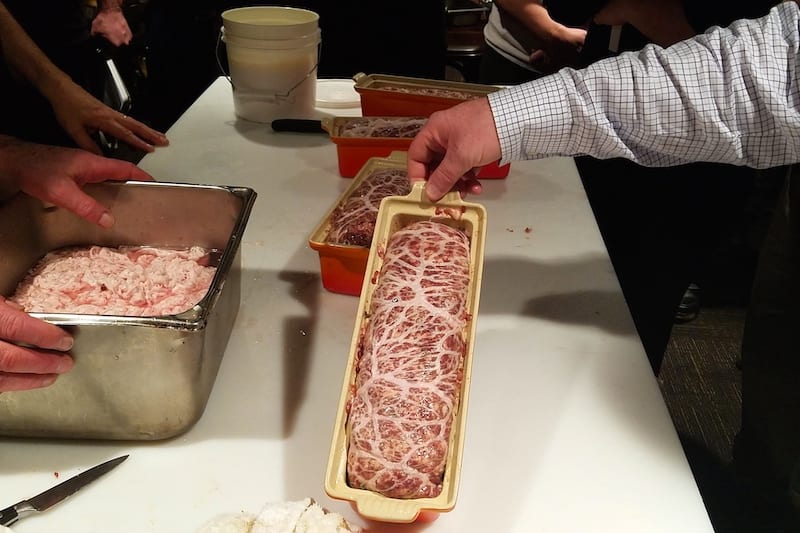
A fascinating tidbit that we learned, was the use of animal blood in cooking. If you’ve ever eaten a traditional Irish breakfast, you’ve probably tried black pudding, or blood sausage. The French version is “boudin noir” and I suspect that one could find different variations throughout many regions of the world.
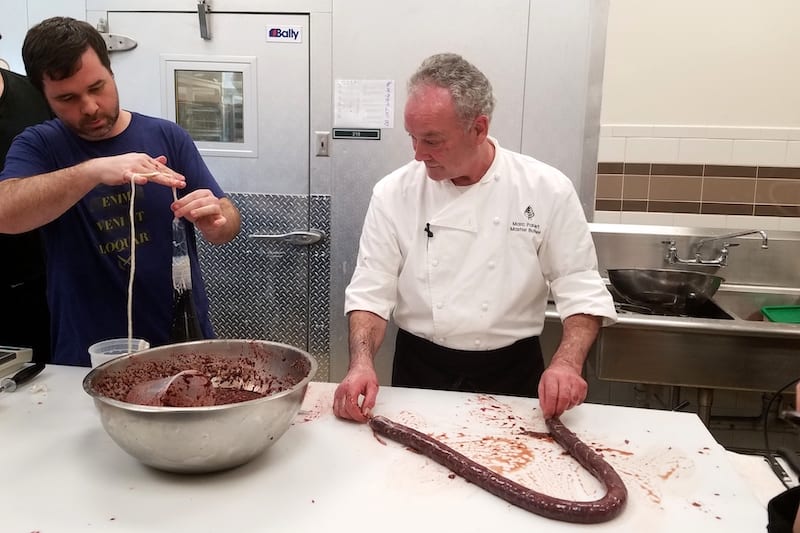
Harnessing Charcuterie
Curing meats doesn’t just accentuate flavor, it preserves them. Before the days of refrigeration, charcuterie was the only way to extend the shelf-life of meat after it was butchered. By learning to cure meats, chefs are able to not only increase the value of certain cuts, they can also make use of a larger volume of meat over a longer period of time. The science of curing is a valuable skill and one that should not be taken lightly. Curing salts, which are a necessary part of the process, must be used precisely. Thankfully, under Sullivan and Pauvert’s tutelage, chefs and butchers are given a solid introduction.
Knowledge was only part of what was shared during the event. Meals were prepared and enjoyed by the group with a family dinner on the second evening. As I sat sharing a meal with everyone, gratitude and goodwill filled the room. By generously sharing their knowledge with other industry practitioners, Marc Pauvert and Michael Sullivan are working to preserve and reinvigorate culinary techniques to help see us through a time when the effective and efficient use of resources is paramount.
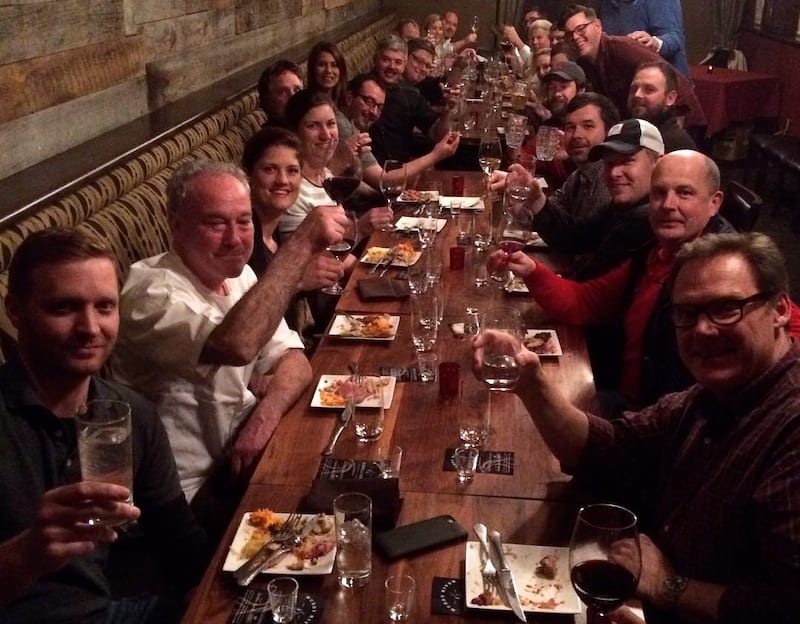
Many thanks to Chef Luca Annunziata from Forchetta for bringing The Art of Butchering and Curing Event to Charlotte and the opportunity to witness the community it is helping build. Truly, a great time was had by all!

